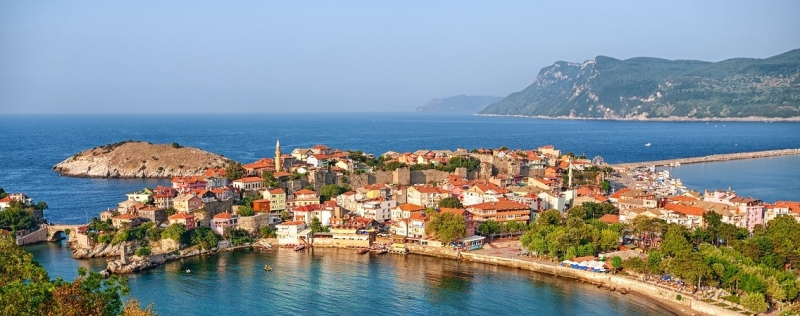
Travertines and grandiose canyons, alpine landscapes and mountain lakes, rock monasteries and monuments of the Ottoman era, saffron plantations and sandy beaches – the Black Sea coast of Turkey can surprise even sophisticated travelers. We tell you what to see in a lesser-known part of the country.
Safranbolu – the saffron capital of Turkey
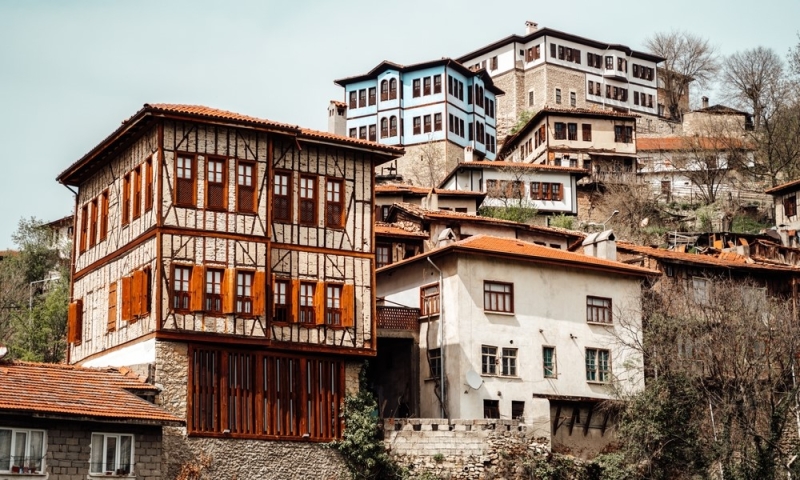
Ancient Safranbolu owes its prosperity to its favorable location on the Great Silk Road. Since the times of the Ottoman Empire, the city has preserved entire neighborhoods with traditional buildings and monuments of bygone eras, from a functioning hammam and caravanserai with artisan shops to bazaars and mosques. A living open-air museum, protected by UNESCO, Safranbolu attracts with the authentic atmosphere of oriental tales, an abundance of spices, Turkish delight and ancient streets that are so pleasant to wander through.
Don’t miss the saffron monument – a bright purple flower emerging from a huge bulb in the Old Town. The fragrant saffron harvest on the surrounding farms is harvested from mid-October to November – if you come during this time, you can see the process with your own eyes, admire the rows of flowers, taste the freshest saffron tea and buy souvenirs in the store near the field.
Near the city there is the Bulak cave. The usual excursion trail, almost 400 meters long, shows a civilized version of the dungeon: the path is paved, and the stalagmites and stalactites are decorated with multi-colored lighting. If you don’t suffer from claustrophobia and are willing to get pretty dirty, for an additional fee you can visit the “wild” part of the cave with underground lakes, a waterfall and bats.
And if you prefer walks in the fresh air and open spaces to the horizon, go to Tocatli Canyon to admire the massive rock walls, the leisurely flow of the river, the historic aqueduct and tiny lakes. There is a viewing platform with a glass floor on top, and it can be crowded. B In the unimproved Sirkali Canyon there are fewer people, but going down to the bottom is extremely problematic, but the pristine beauty appears in all its splendor.
Where to stay:
At the five-star Hilton Garden Inn Safranbolu (rating 8.8) – from 4,600 rubles* for a standard room with a view of the city or pool.
In the guest house Turgut Reis Konak (rating 9.2) – from 1,800 rubles* per night for a standard room for two.
Samsun – the birthplace of the Amazons
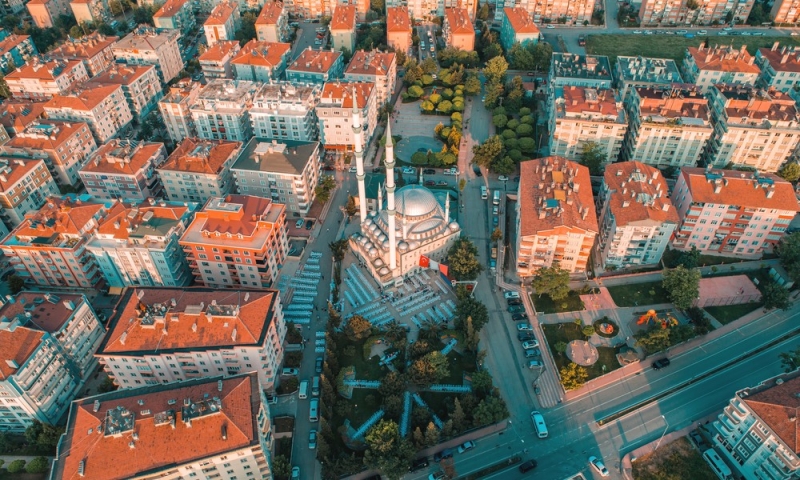
Samsun was founded by the Greeks back in the 7th century BC. The ancient Roman historian Pliny considered these places the birthplace of the Amazons, and today the events of the Iliad are reminiscent of a thematic museum on the seashore. It’s difficult to say how authentic the reconstructions in the Amazon village are, but as an amusement park for the whole family, the place is quite popular – take, for example, the 11-meter-high lion sculptures.
The modern history of Turkey is told by the pretty steamship Bandirma, moored at the pier in the city center, and the museum in the hotel where Kemal Atatürk stayed. The ship is of interest to tourists mainly as a photographic object, but the museum exhibition is very fascinating – there are many scenes from local life.
Samsun is a convenient starting point for exploring the Sahinkaya Canyon, the second longest in Turkey. From the turquoise waters of the Kyzylyrmak River, three-hundred-meter cliffs rise over a distance of 2.5 km, sometimes flat and covered with forest, sometimes almost vertical. To see all the beauty, take a one-hour boat tour. Hiking, rock climbing, mountaineering, slacklining, paragliding and mountain biking – this natural park offers opportunities for all types of activities.
Where to stay:
At the four-star Hampton by Hilton Samsun hotel (rating 8.6) – from 4,800 rubles* per night in a standard room with a queen-size bed.
At the four-star Park Inn Radisson Samsun hotel (rating 8.5) – from 6,000 rubles* for a superior room for two.
Giresun – the hazelnut capital of the region
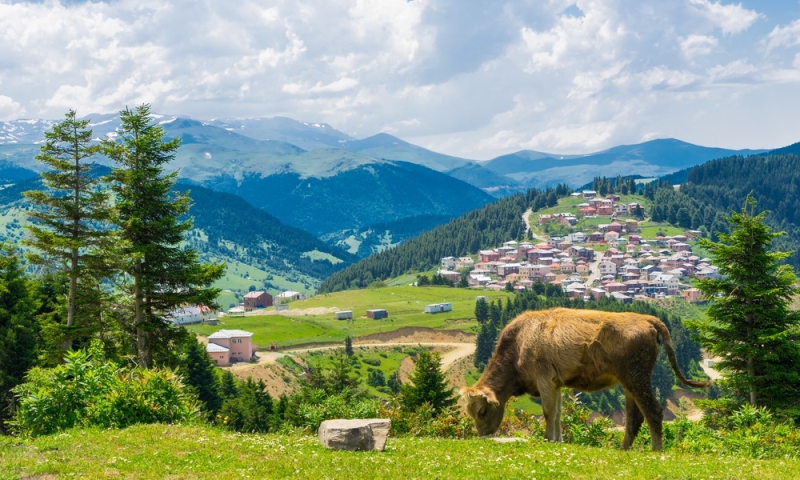
The unusual name of the port in the south of the Black Sea coast was given by the Greeks even before our era in honor of the cherry trees growing here. Giresun is still known today as an agricultural region: the best cherries and hazelnuts in Turkey are harvested here. Tourists come here to wander through the ancient castle in the Old Town, reminiscent of the Roman and Byzantine periods of history, to explore the Ottoman-era residential buildings in the Zeytinlik area and to visit the island of the Amazons, 15 minutes from the waterfront. According to legend, it was here that stern warriors lived and Hercules searched for the Golden Fleece, so costumed reenactments based on mythical scenes are performed for guests. The city itself surprises with the unusual use of religious buildings: in the old Armenian church there is a historical museum, and in the Gothic Catholic church there is a children’s library.
The sandy beaches of Giresun attract lovers of sea recreation, and extreme sports enthusiasts enjoy diving, spearfishing and swimming in the caves of the coast. If you prefer dry land, go to breathe the mountain air on the Kulak Plateau or one of the surrounding natural parks, such as Agakbasi. Pine forests, flowering or snow-covered meadows and clouds that you can touch with your hands will not leave you indifferent. Food in local restaurants seems especially delicious after a walk. It’s worth a look at the amazingly colored Goksu travertines with mineral water and the waterfalls of the blue Lake Kuzalan.
Where to stay:
At the bed and breakfast Serenity Pamuk Hotel (rating 9.5) – from 3,200 rubles* per night for a deluxe room.
In the four-star hotel La Quinta by Wyndham Giresun (rating 8.5) – from 5,400 rubles* per night in a standard room with two single beds.
Trabzon – the former capital of the Trebizond Empire
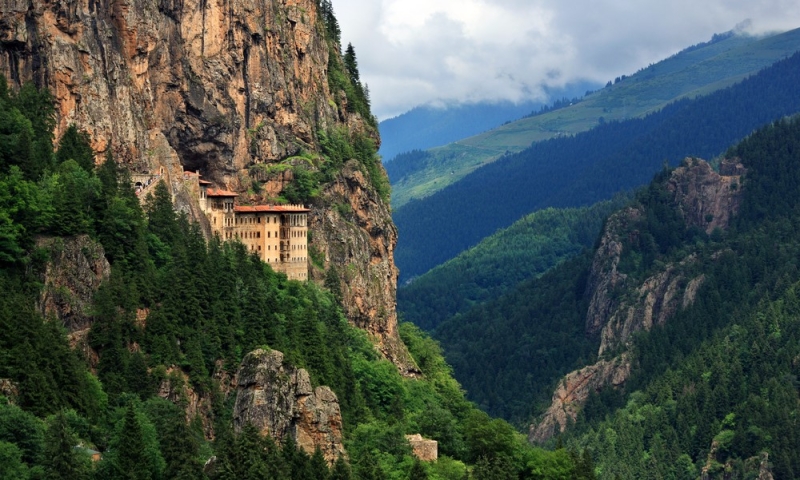
Among Turks, the city is famous for the Kemal Ataturk Museum, and tourists are more attracted to the historical and natural attractions of the former capital of the Trebizond Empire. Among them is the late Byzantine Hagia Sophia, built in the 13th century. It shared the fate of the Istanbul Hagia Sophia: it was an Orthodox church, then a mosque, in the second half of the 20th century it became a museum, and ten years ago the crescent re-established itself above the dome. Some of the Byzantine frescoes and mosaics have been preserved in the cathedral – be sure to see them while they are available to visitors, even if not in their best condition.
Fans of medieval architecture will love Trabzon Castle – the remains of defensive walls and towers in the old city. To learn more about the complex history of these places and the life of the inhabitants, go to the city museum. Of course, Trabzon has plenty of mosques, colorful bazaars and ancient streets that are so interesting to explore, but do not forget to take time to explore the surrounding area.
Fifty kilometers from the city, in the Altındere National Park with waterfalls and green valleys, there is the impressive rock monastery of Panagia Sumela. The Orthodox monastery was founded on an almost three-hundred-meter cliff back in the 4th century, and during the Byzantine Empire, Sumela became a large monastery and cultural center of the entire region. In addition to history and ancient frescoes, people go to the current museum of religion at the monastery for stunning views. This is a real city in the rock: some of the premises are located in natural caves, and a huge cliff rises above the outer walls. Wear comfortable shoes – you’ll have to walk a lot on stairs, but the experience is definitely worth the effort.
Where to stay:
In the four-star Tilya Resort Hotel on the Black Sea coast (rating 8.1) – from 3,700 rubles* for a deluxe room with a king-size bed.
At the Cebeci Grand Hotel in the city center (rating 8.1) – from 4,100 rubles* for a standard room.
Rize – the tea capital of Turkey
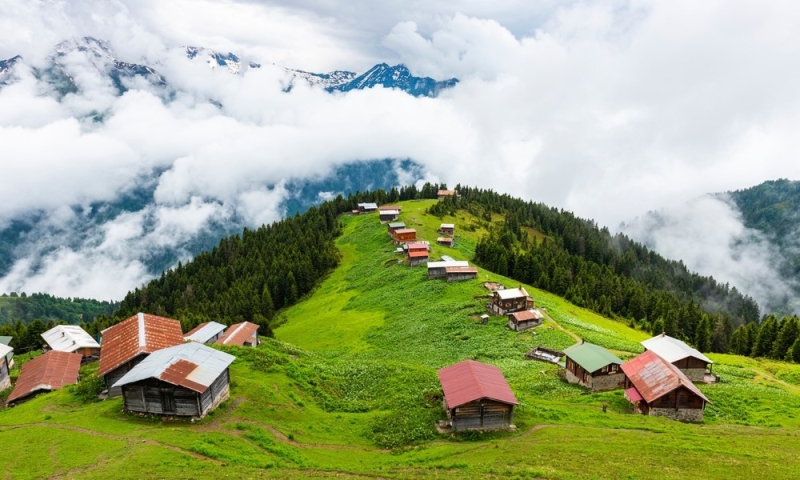
Rize is located on a narrow stretch of coastline between the Kachkar Mountains and the Black Sea. The status of the city is emphasized by the unusual Tea Mall – a seven-story building in the shape of a traditional tea glass, and the tea plantations located in the surrounding area. The cozy city museum in the center displays ancient amphorae, all kinds of vessels, coins, jewelry and reconstruction scenes of local life: wooden clogs alternate with coins from treasures, weapons and Russian samovars.
From the observation decks of the dilapidated Genoese castle in the center, it becomes clear that tourists come here not only to drink tea and get acquainted with everyday life: the surrounding mountains, in some places covered with snow caps, beckon to go on an exciting walk. Alpine plateaus, waterfalls and wild rivers, turquoise lakes and mountain peaks of national parks are hidden among the picturesque spurs. It is better to go on long treks and the almost four-thousand-high Kachkar Peak, the highest point of the Kachkar Mountains, in the summer – in winter, due to the snow, it can be difficult to even reach the highlands. But warm evenings in mountain villages after walks in the frosty air will be remembered for a long time.
Where to stay:
At the five-star Babillon Hotel Spa & Restaurant (rating 8.2) – from 4,900 rubles* per night for a standard room for two.
In the five-star boutique hotel Ricosta Hotel – from 14,900 rubles* per night in a family room with sea view.
Lake Uzungol – Turkish Alps
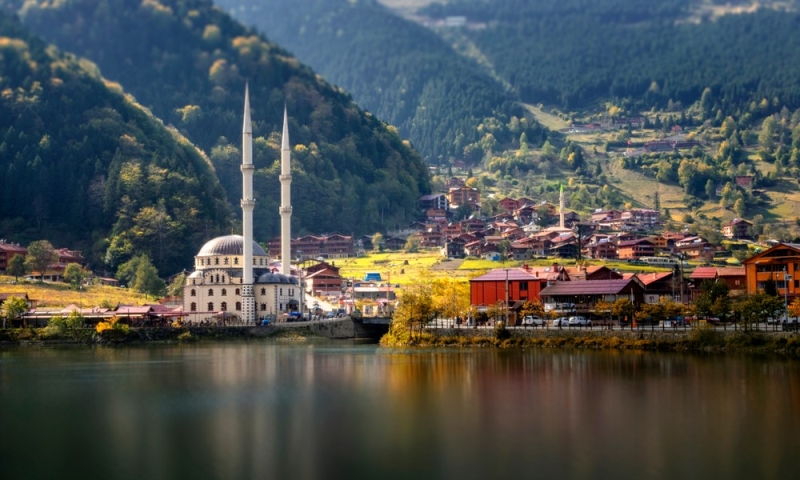
Lake of glacial origin Uzungol in a valley between green hills just 70 km from Rize is a holiday destination for tourists enchanted by alpine nature. The color of the water, depending on the time of year and lighting, changes from turquoise to rich green, and the winter landscapes are reminiscent of photographs of Austrian Hallstatt, with the only difference that instead of a Lutheran church on the shore there is a mosque with two minarets. A promenade with dozens of luxury hotels, restaurants, coffee shops and shops stretches from it. Active recreation enthusiasts can go hiking, rafting or paragliding over the lake in tandem with an instructor. You can also admire the views from above by walking up to the observation decks around the village.
It’s worth a look at the private Dursun Ali Museum to see funny original sculptures made from tree roots, traditional household items and archaeological artifacts. With small children, it is better to visit the small Masal Park with sculptures of cartoon characters: Tom and Jerry, the cheerful family of Smurfs, dashing Simpsons on skateboards, Scrooge McDuck and others.
Where to stay:
At the Uzungöl Poyraz Hotel (rating 8.8) – from 2,800 rubles* for a deluxe room with a queen-size bed.
In the guest house Inan Kardesler Bungalow Motel (rating 8.1) – from 6,400 rubles* for a standard room for two with mountain views.
*Prices are current at the time of publication.

